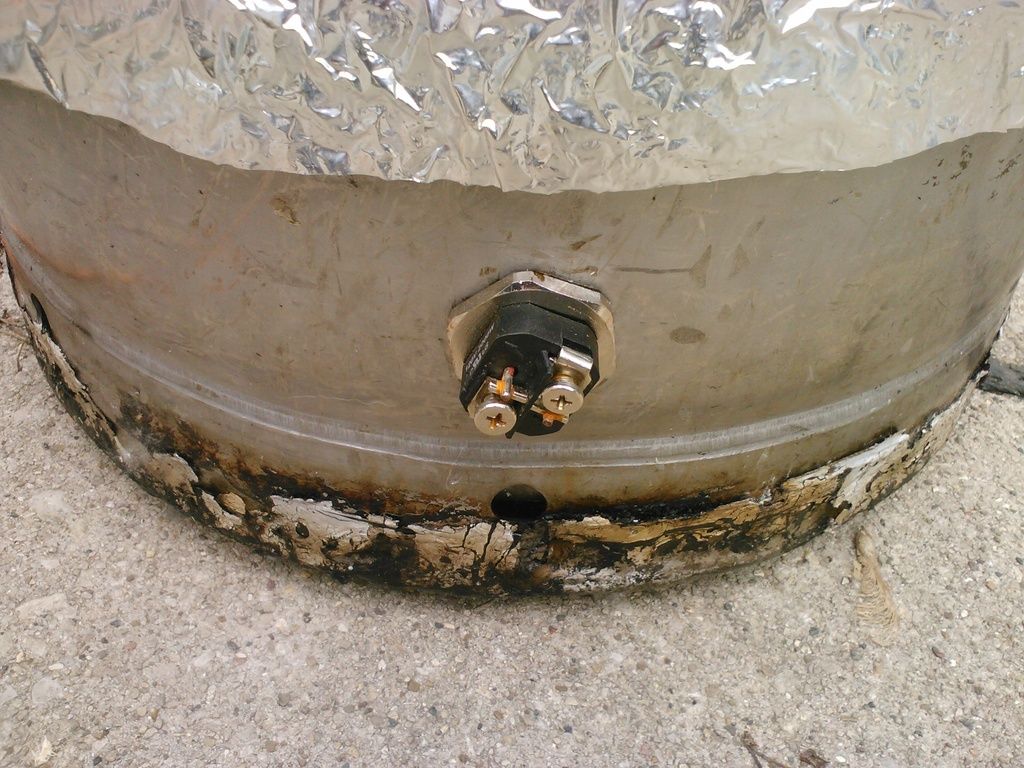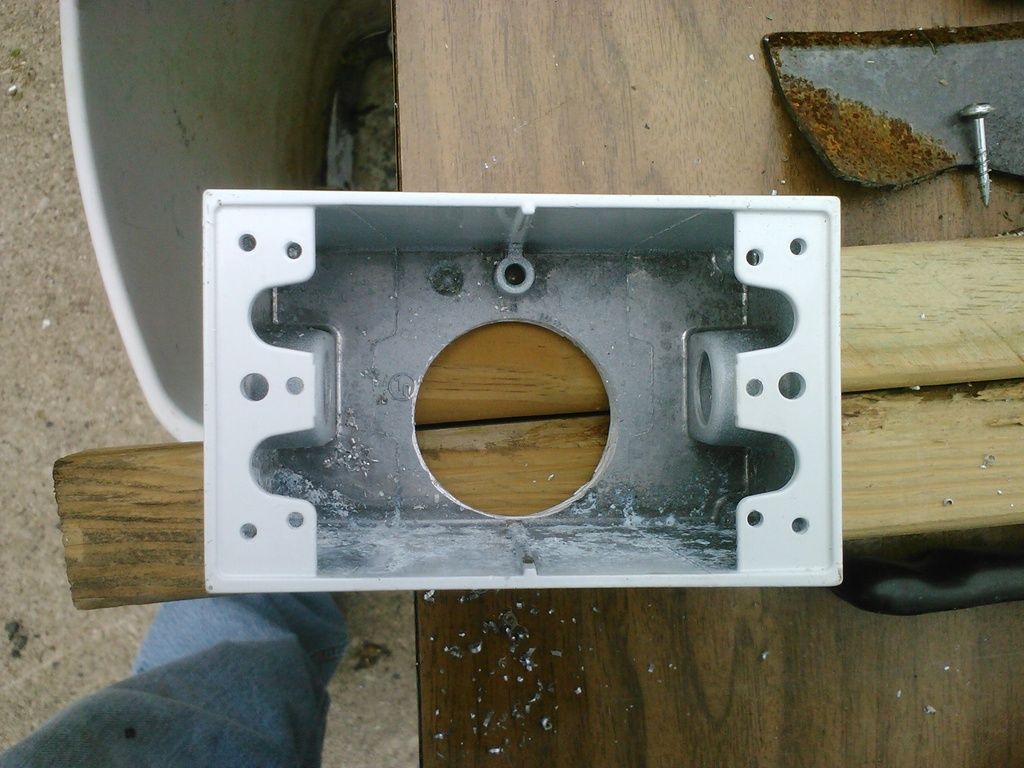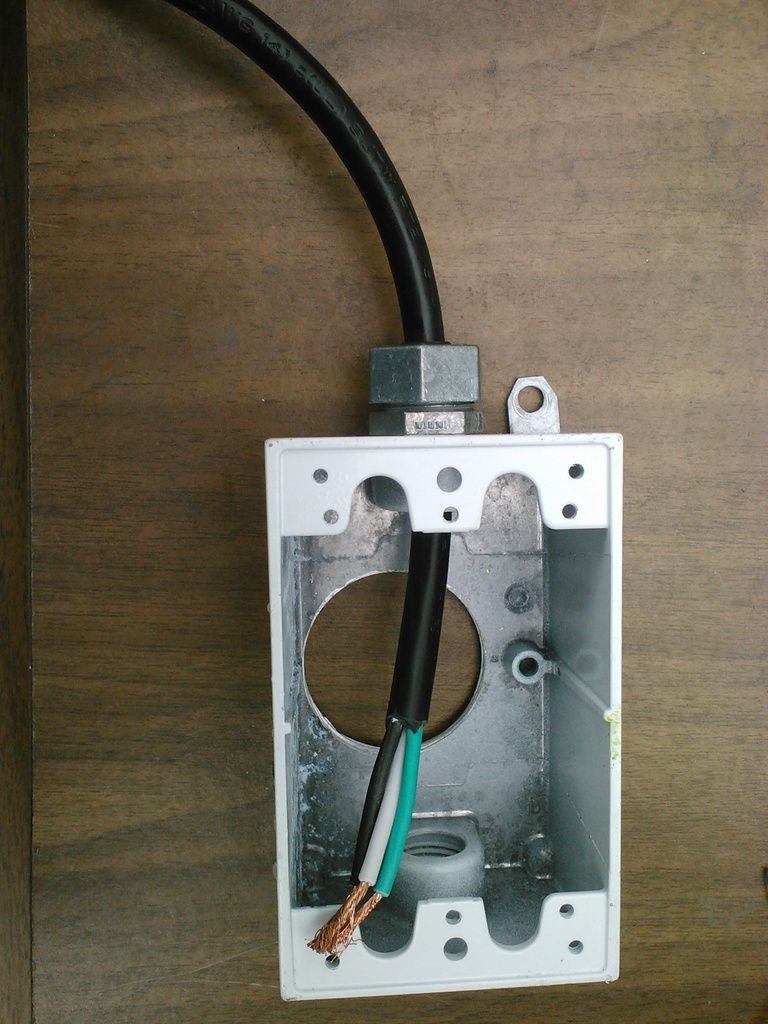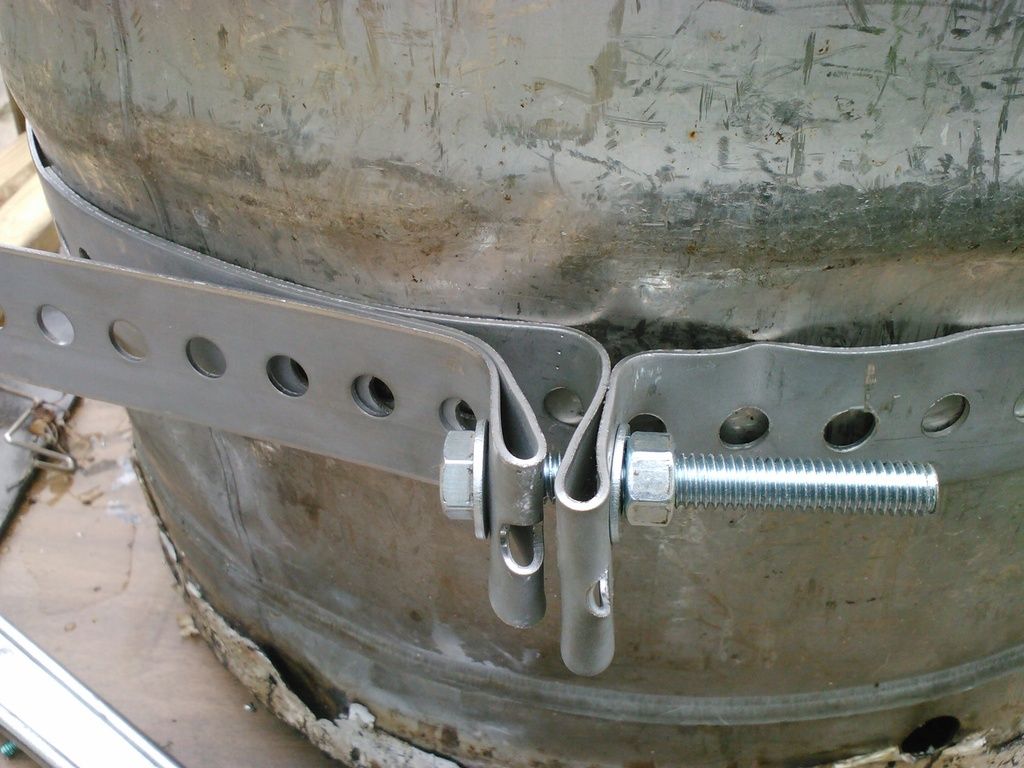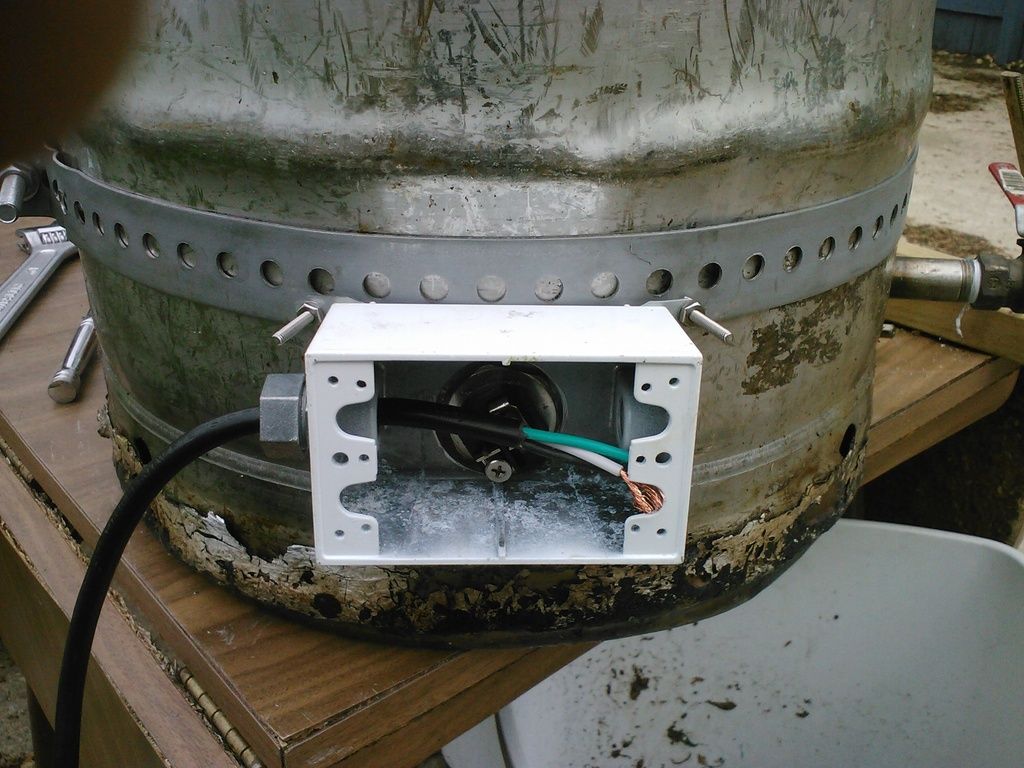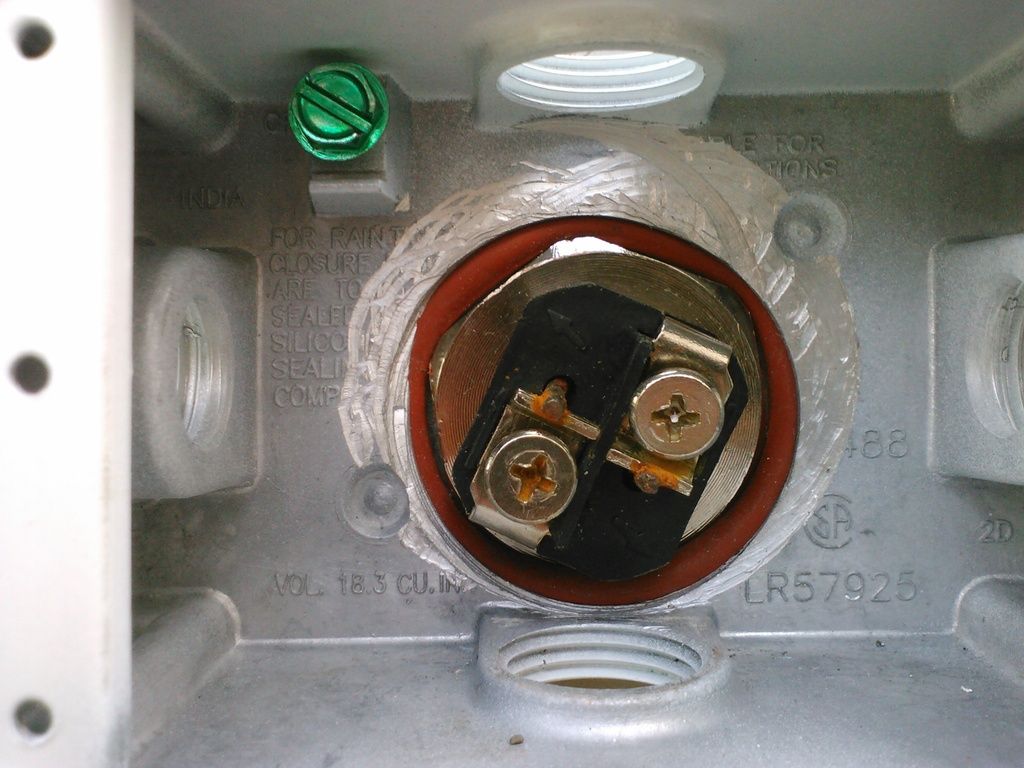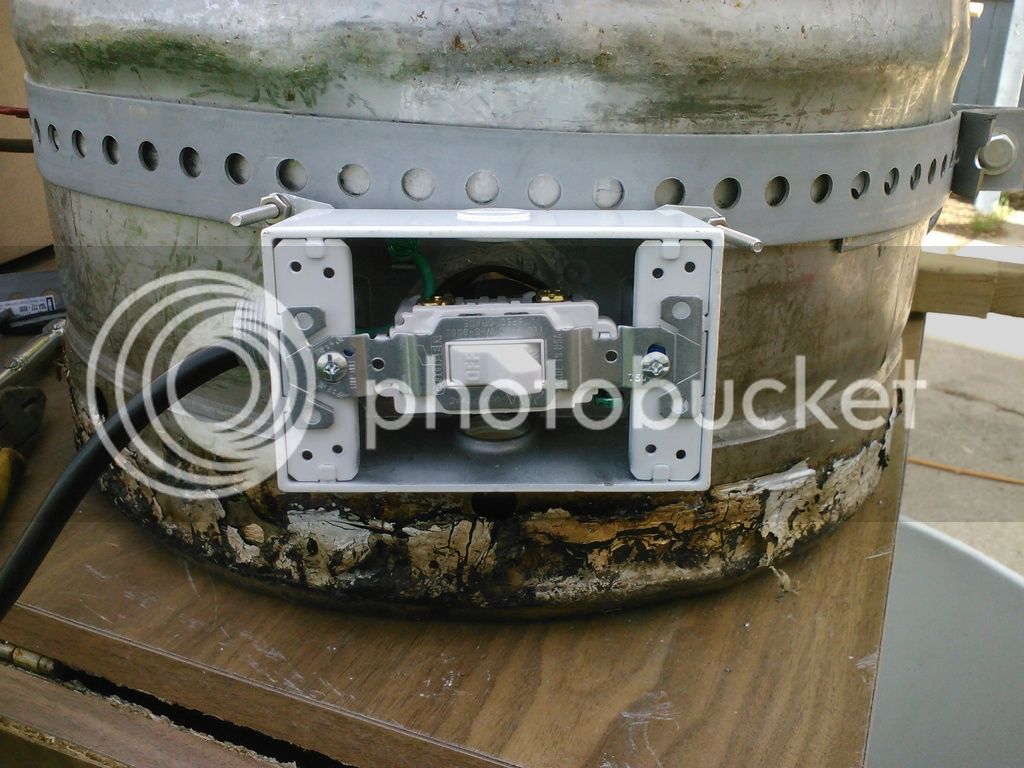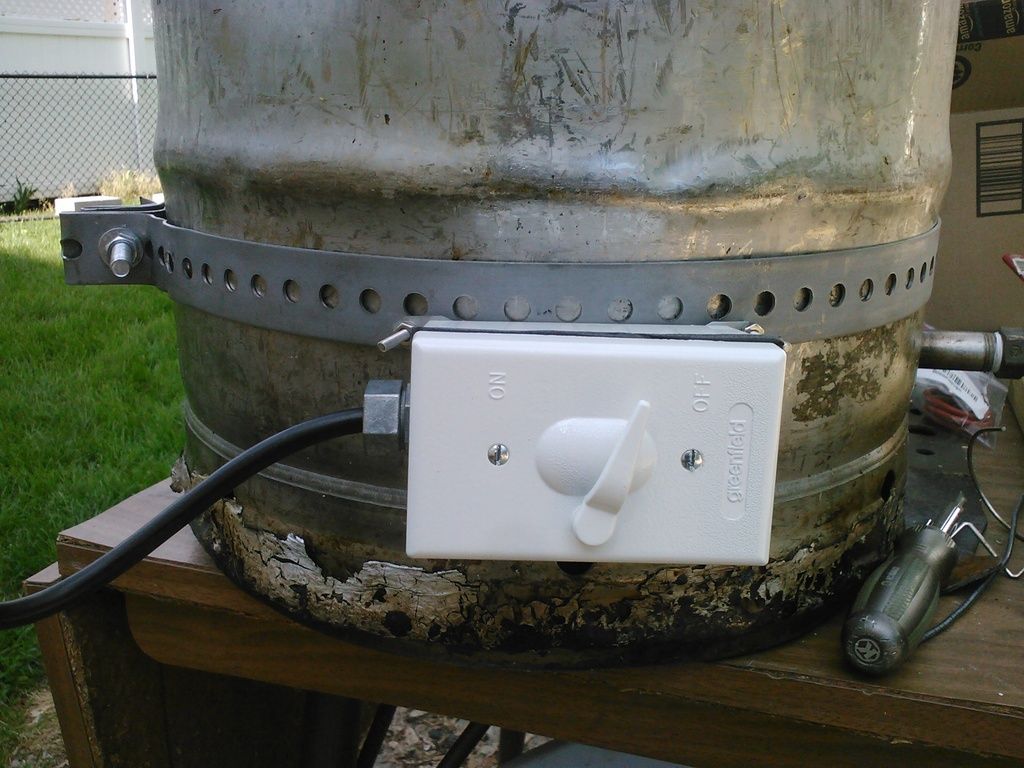So this is just my thread starter and pictures of the build will likely come this weekend. I experimented over the winter with stovetop BAIB after more than 20 years of brewing on the 3-tier. The winter was just too brutal to brew in the garage as much as I wanted. I liked it but the 5-gal limitation with a dunk sparge was just not doing it for me.
I am moving into this cautiously because I have a lot of existing equipment that I wish to re-purpose and continue to use in the 45 days of summer when I can brew on the deck and play with the dogs. When Mother Nature throws her worst at us, I can retire to the basement.
I have taken one of my keggles and drilled the first of two electric element holes. For the sake of portability and simplicity, I went with two LWD 2000W 110V elements. The first one is installed and leak free with a cold water test.
As the element enclosures I wanted were out of stock at the time, I decided to get creative. Using a piece of 2" wide 18 gauge strapping I built a compression strap for the outside of the keggle. #8 stainless machine screws, two per element, will be thread through the back of the strap and locked in place with a nut and star washer. Once the strap is tightened in place, a waterproof outlet box will slide over the screws (the ears of the boxes) and the back side of the element (the backside holes are already enlarged to 1 3/8" now I just need some Dremel work to knock the corners out). Ground wires with crimped and soldered ends will go over the ears of the box, a flat washer and nut over that. Waterproof cord compression with a 4' pigtail come out one side of each box and a waterproof switch cover over a 20 amp switch goes on the front. I still want to fabricate a foam gasket for around the element to box interface but I have not found the material yet. Assembly pictures will help.
The goal is to use my two dedicated 20 amp GFCI outdoor outlets in summer making this a boil kettle in my 3-tier and the same circuits, with different drops to use it in the winter, or when it is raining, in the basement as a BIAB set-up. If all goes as I expect it will, I will likely move the whole set-up to a 20 gallon kettle at some point to do all BIAB 10 gallon batches.
the plan is to work on this over the long weekend so progress pic's should be forthcoming.
I am moving into this cautiously because I have a lot of existing equipment that I wish to re-purpose and continue to use in the 45 days of summer when I can brew on the deck and play with the dogs. When Mother Nature throws her worst at us, I can retire to the basement.
I have taken one of my keggles and drilled the first of two electric element holes. For the sake of portability and simplicity, I went with two LWD 2000W 110V elements. The first one is installed and leak free with a cold water test.
As the element enclosures I wanted were out of stock at the time, I decided to get creative. Using a piece of 2" wide 18 gauge strapping I built a compression strap for the outside of the keggle. #8 stainless machine screws, two per element, will be thread through the back of the strap and locked in place with a nut and star washer. Once the strap is tightened in place, a waterproof outlet box will slide over the screws (the ears of the boxes) and the back side of the element (the backside holes are already enlarged to 1 3/8" now I just need some Dremel work to knock the corners out). Ground wires with crimped and soldered ends will go over the ears of the box, a flat washer and nut over that. Waterproof cord compression with a 4' pigtail come out one side of each box and a waterproof switch cover over a 20 amp switch goes on the front. I still want to fabricate a foam gasket for around the element to box interface but I have not found the material yet. Assembly pictures will help.
The goal is to use my two dedicated 20 amp GFCI outdoor outlets in summer making this a boil kettle in my 3-tier and the same circuits, with different drops to use it in the winter, or when it is raining, in the basement as a BIAB set-up. If all goes as I expect it will, I will likely move the whole set-up to a 20 gallon kettle at some point to do all BIAB 10 gallon batches.
the plan is to work on this over the long weekend so progress pic's should be forthcoming.































![Craft A Brew - Safale BE-256 Yeast - Fermentis - Belgian Ale Dry Yeast - For Belgian & Strong Ales - Ingredients for Home Brewing - Beer Making Supplies - [3 Pack]](https://m.media-amazon.com/images/I/51bcKEwQmWL._SL500_.jpg)







